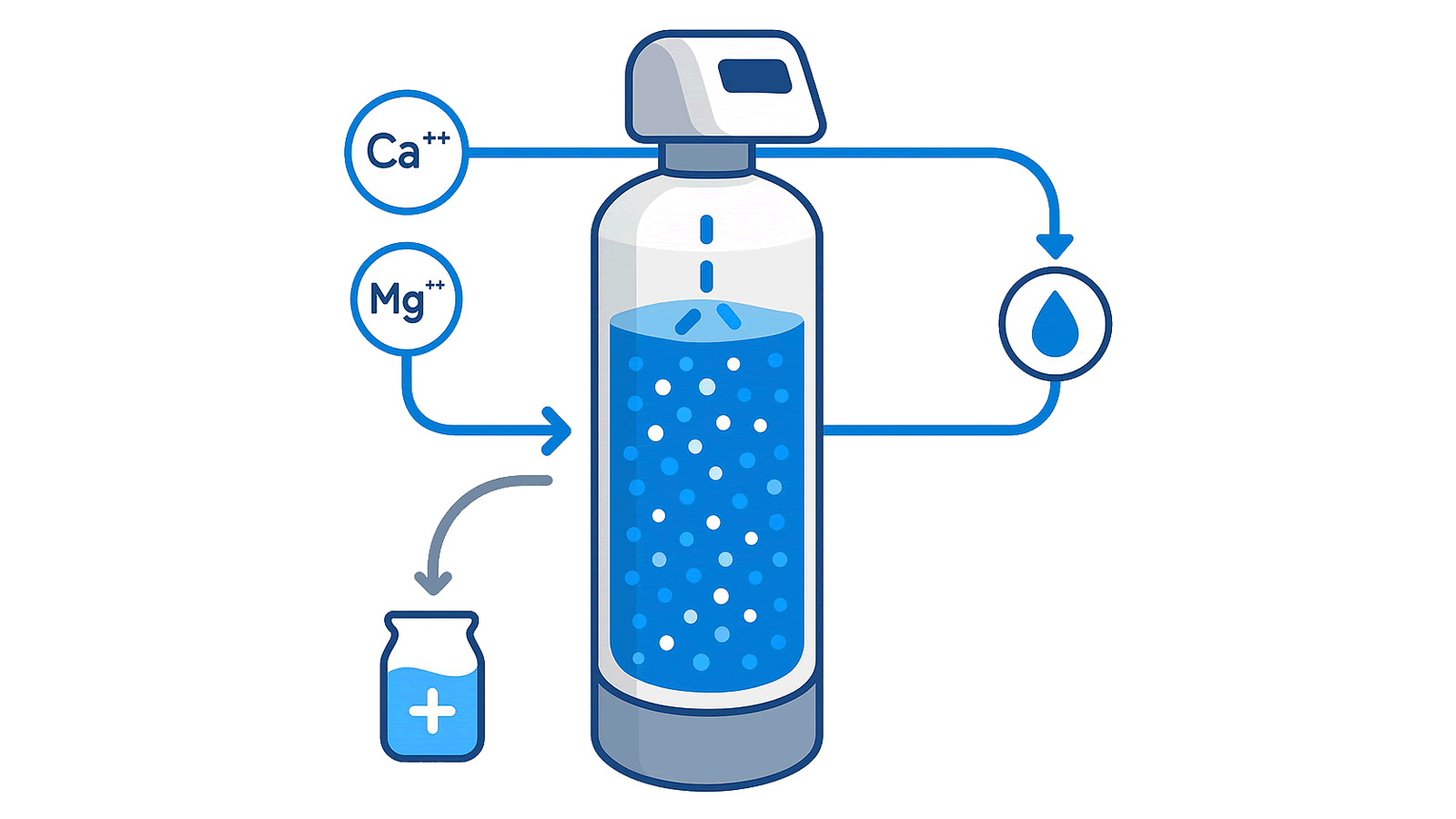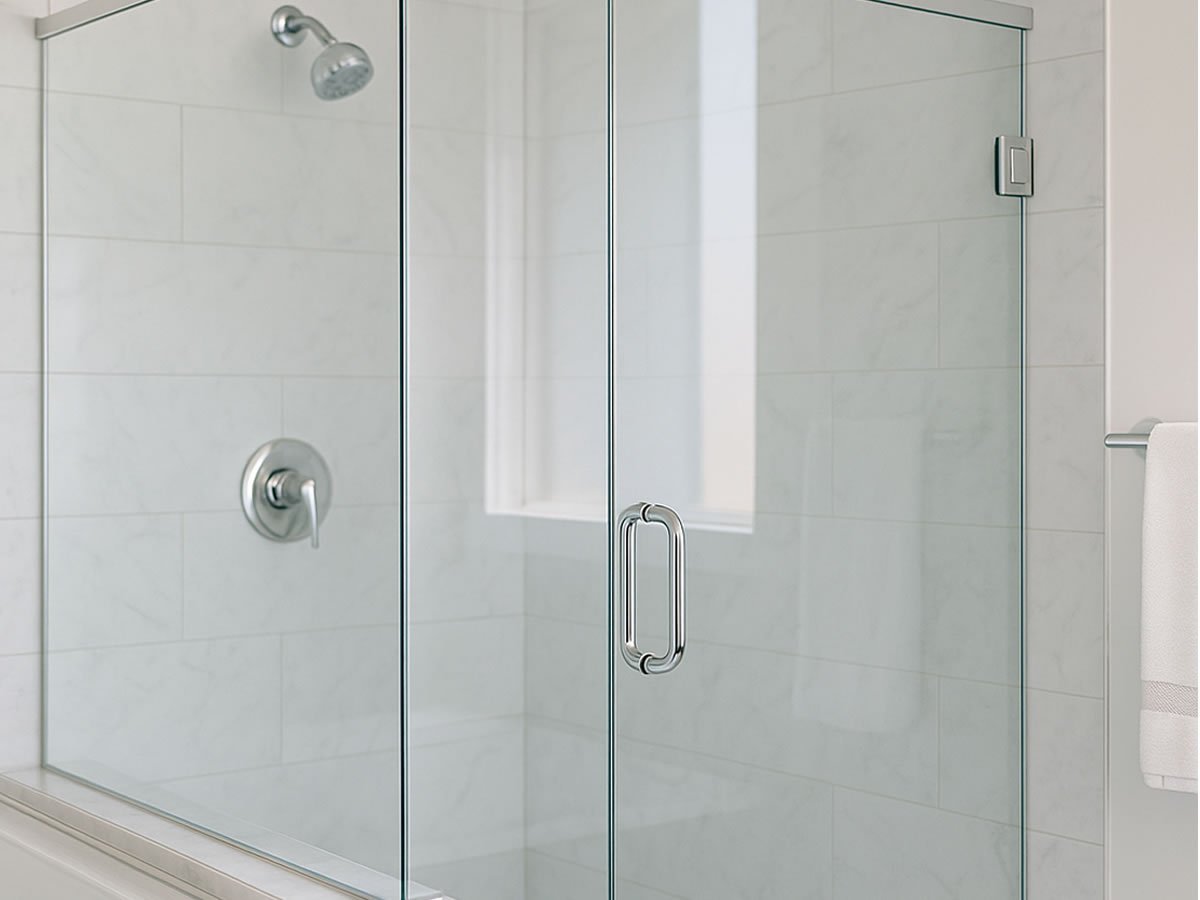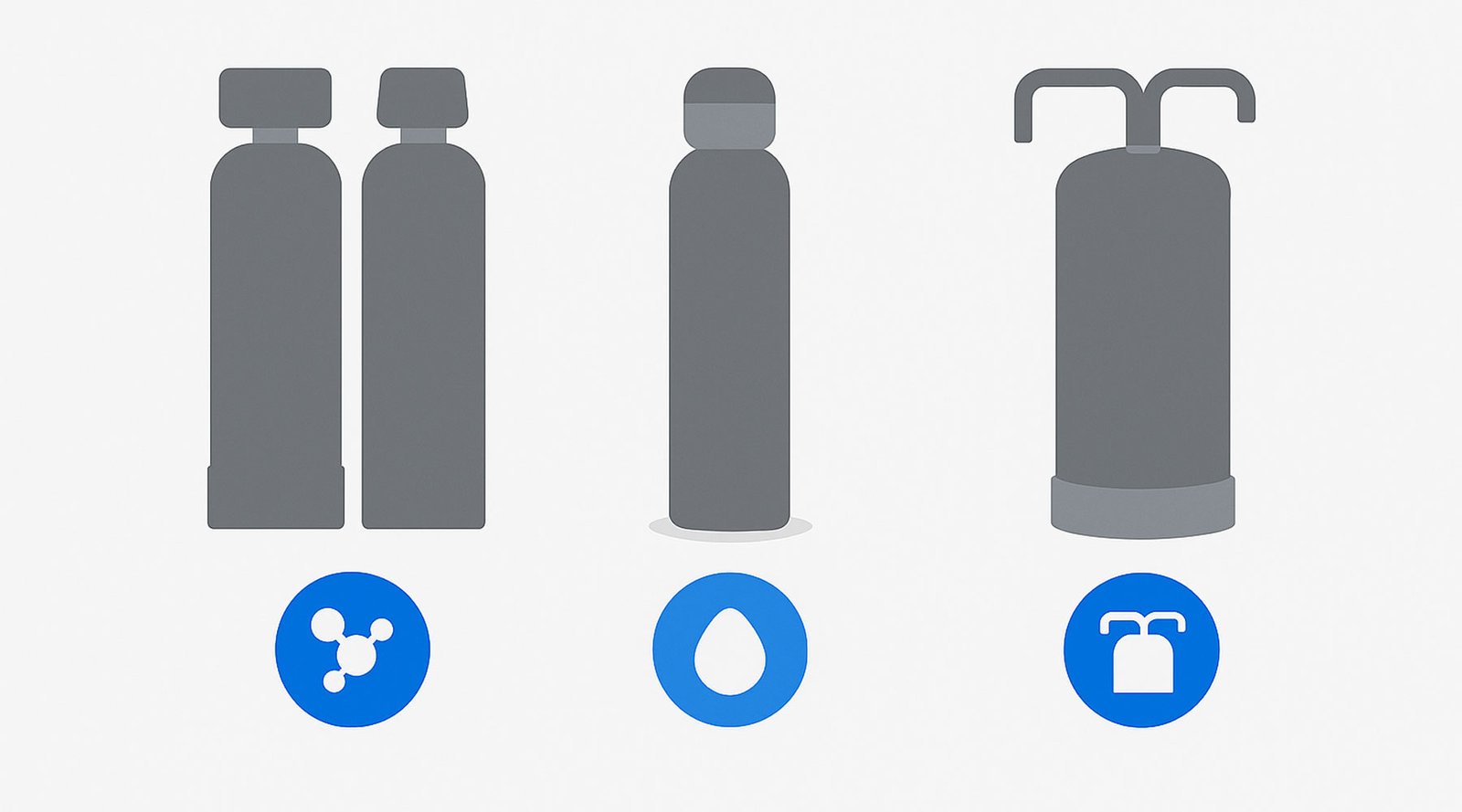1. What Water Softeners Remove — and How They Work
Water softeners primarily target the hardness minerals calcium and magnesium that leave limescale on fixtures and inside appliances. Traditional softeners use a process called ion exchange, where hard mineral ions are exchanged for sodium (or potassium) ions as water flows through a resin bed. The result is softer water that helps prevent scale buildup.
Some systems marketed as salt‑free conditioners don’t remove minerals; instead, they change how hardness minerals behave—often using media that encourages minerals to form microscopic crystals that are less likely to stick to surfaces. These can be helpful for scale reduction, especially where low maintenance is important, but performance differs from ion‑exchange softening and results can vary with very hard water.

2. Benefits of Softened Water for Home and Health
a) Cleaner Home & Appliances
- Protects plumbing and water heaters: Reduces internal scale, helping maintain efficiency and extend lifespan.
- Shinier fixtures and glass: Fewer hard water spots on shower doors, faucets, and glassware.
- Lower energy use: Scale‑free heaters and appliances typically operate more efficiently.
b) Cleaning & Skin Care
- Soaps and detergents work better: Softer water improves lather and rinsing, so you may use less product.
- Less soap scum: Reduces residue on tubs, tile, and sinks.
- Skin and hair feel softer: Many households report improved feel post‑shower in softened water.
c) Improved Household Hygiene
- Cleaner dishes and linens: Reduced mineral film on dishware and glass; laundry looks and feels cleaner.
- Fewer deposits on appliances: Coffee makers, dishwashers, and humidifiers need less descaling.

3. Are There Downsides? Health & Environmental Considerations
Added Sodium
Ion‑exchange softening adds a small amount of sodium to softened water. For most households this is minimal, but if you’re on a sodium‑restricted diet, consider potassium chloride as an alternative regenerant or use point‑of‑use filtration for drinking and cooking lines.
Loss of Calcium & Magnesium
Softeners reduce calcium and magnesium in tap water. These minerals are commonly consumed in adequate amounts through food, and most households do not rely on water as a primary source.
Skin & Corrosion Considerations
Some people experience dry skin with hard water; softened water can improve feel but isn’t a medical treatment. In homes with existing corrosion issues, softened water may change water chemistry and accelerate wear in compromised plumbing. A professional inspection and proper system setup—sometimes including partial softening (e.g., excluding the kitchen cold line)—can be prudent.
4. Choosing the Right Softener for Your Home
Salt‑Based Ion Exchange Systems
- Best for true softening: Most effective at removing hardness minerals.
- Maintenance: Requires periodic salt (or potassium) replenishment and resin regeneration.
- Fit: Great for moderate to very hard water and scale prevention throughout the home.
Salt‑Free Conditioners (e.g., Template‑Assisted Crystallization)
- Scale reduction: Helps reduce scale adhesion without adding salt or removing minerals.
- Maintenance: Typically lower maintenance; effectiveness varies with water chemistry and hardness level.
- Fit: Good where maintenance simplicity is key and hardness levels are not extreme.
Dual‑Tank Systems
- Continuous soft water: One tank regenerates while the other is in service—ideal for larger or high‑usage households.
- Efficiency: Can improve performance and reduce downtime during regeneration cycles.

5. Real‑World Performance and Consumer Insights
A well‑sized, professionally configured system is the key to consistent results. Households typically report noticeably fewer spots, easier cleaning, and improved appliance upkeep after installation. For salt‑free conditioners, expectations should be centered on scale reduction rather than complete hardness removal.
6. Eco & Practical Tips for Smart Usage
- Test first: Get a professional hardness test before choosing a system.
- Targeted softening: Consider softening baths and laundry while leaving a dedicated kitchen cold line unsoftened if preferred.
- Right salt for you: Use potassium chloride if minimizing sodium intake is important.
- Optimize settings: Program regeneration and salt dose to your actual hardness, household size, and usage patterns.
Quick Summary
| Benefit | Description |
|---|---|
| Removes Hard Minerals | Reduces calcium & magnesium via ion exchange (salt‑based softeners). |
| Protects Appliances & Pipes | Prevents limescale buildup, improves efficiency and extends lifespan. |
| Enhances Cleaning & Personal Care | Better lather, cleaner dishes, reduced soap scum; skin and hair feel softer. |
| Sodium Consideration | Minimal added sodium; alternatives include potassium chloride or POU filters. |
| Choice of Systems | Salt‑based softeners, salt‑free conditioners, or dual‑tank—tailored to your home. |
Not sure which system fits your water and household?
We’ll test your water, discuss goals, and recommend the right solution.
